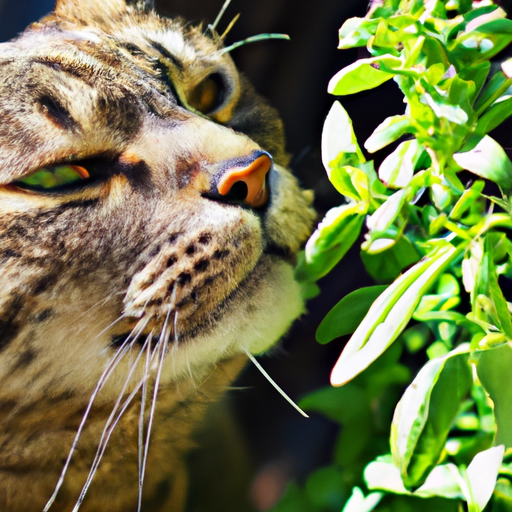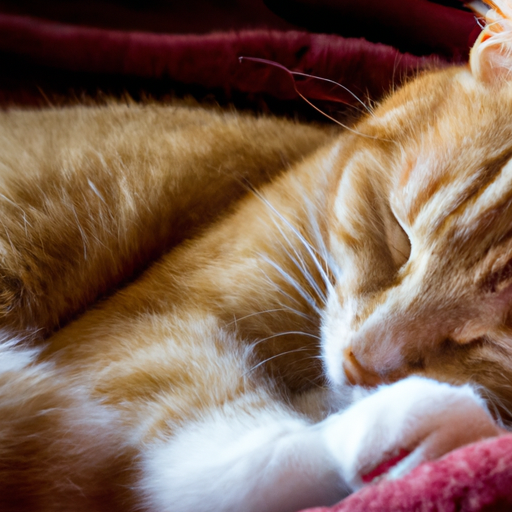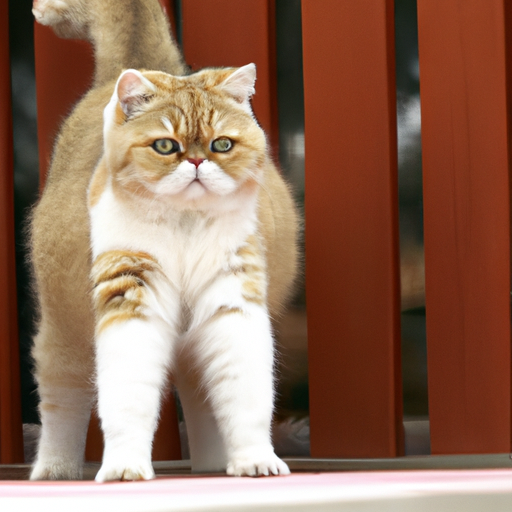How To Keep Cats Off Counters
Are you tired of your feline friend jumping onto your kitchen counters, causing havoc and leaving a trail of fur everywhere? Look no further, this comprehensive guide titled “How To Keep Cats Off Counters” has the solutions you’ve been praying for. This practical guide provides insightful tips and tricks to help you maintain a cat-free countertop. You will explore creative ways that discourage cats from counter-hopping, along with essential reasons why it’s crucial for Fluffy’s paws to stay on the ground. Let’s show you how to reclaim your counter space easily!
Understand the Cat’s Motivations
Before you launch into anti-counter strategies, it’s essential to first understand why your cat may feel inclined to jump onto your counters.
Explore the instincts of cats
It’s helpful to remember that, despite their domesticated state, cats are still driven by instincts tied to their wild ancestors. In the wild, having the higher ground gives one an advantage in terms of spotting potential threats or prey. It makes sense that your indoor cat would seek opportunities to fulfill this instinctual drive by seeking out the highest points in your home like cupboards, shelves, and, most inconveniently, kitchen counters.
Understand why cats like heights
Cats are natural climbers and feel most secure when they can survey their surroundings from a higher vantage point. It’s in their nature to want to perch atop the tallest piece of furniture or scale the kitchen counters. This behaviour allows them to monitor everything going on around them, whether it’s a potential threat or an enticing play opportunity.
Comprehend the appeal of counters for cats
Your kitchen counters in particular can be incredibly appealing to cats. Not only do they fulfill the height requirement, but they also offer a multitude of interesting objects and smells. Your cat is merely acting on the curiosity that we so adore in our feline friends. But while we appreciate their inquisitive nature, it’s not always appropriate, especially when it involves them hopping onto surfaces where you prepare food.
Make Counters Less Appealing
So, understanding the cat’s motivations, how do you make your counters less appealing to your adventurous feline?
Remove food and water from counters
Cats are enticed by the smell of food. Make sure you remove any food items from your counters and store them in closed cabinets or the refrigerator. Similarly, pet food or water dishes should not be kept on the kitchen counters as they can also attract your cat to this area.
Keep counters clean and clutter-free
Cats are drawn to clutter as it offers opportunities for play and exploration. A clutter-free counter is less likely to draw your cat’s attention. Make sure to keep your counters as clean and as tidy as possible to reduce their appeal to your cat.
Avoid placing objects that may attract cats on the counters
Keeping objects that may attract your cat off the counters is another effective strategy. These could include things like open boxes, grocery bags, or any other items that your cat may find intriguing or inviting.
Provide Alternatives for The Cat
A good way to keep your cat away from the counter is by supplying alternatives that fulfill their instincts and desires.
Introduce cat trees and high-up resting places
Cat trees or elevated cat beds provide the height and vantage point that cats crave. You can also clear off shelves or bookcases and add a comfy blanket to create more appealing alternatives to your counters.
Place cat-friendly areas far from the kitchen
When setting up these alternatives, you need to consider their location. Places that are relaxed and quieter, far from the hustle and bustle of the kitchen, are ideal to keep your cats happy and content.
Keep toys and play areas in other parts of the house
Toys, scratching posts, and play areas should also be placed strategically around other parts of your house to divert your cat’s attention away from the counters. This will also encourage your cat to spend time in these areas instead of gravitating towards the tantalizing kitchen counters.
Train Your Cat
Training your cat to stay off the counters doesn’t have to be a daunting task. It requires patience, understanding, and consistency.
Note the importance of consistency in training
Consistency is key when it comes to training any pet. Your cat needs to understand that being on the counter is always off-limits, and this rule should be reinforced consistently.
Reward the cat for obeying the rules
Positive reinforcement can go a long way in training your cat. Reward your cat when they use their new high spots or keep off the counters. This could be praise, petting, or even a treat.
Guide on how to use verbal commands to dissuade cats from jumping on counters
Use a firm voice to tell your cat “no” when you see them attempting to jump onto the counter. Remember, this shouldn’t involve yelling or scaring the animal; a firm, clear voice is all that is needed.
Use Deterrents
There are a number of commercially produced and natural deterrents that might help in your quest to keep your counters cat-free.
Detail on commercial cat deterrents
Commercial cat deterrents come in various forms, such as sprays, mats, and motion-activated air canisters. These can be effective in discouraging your cat from jumping up onto your counters.
Discuss natural deterrents like citrus smells
Interestingly, cats detest the smell of citrus. Placing citrus peels, using citrus-scented cleaning substances, or even essential oils are natural ways to keep your cats away from the counters.
Recommend some DIY deterrents
For a more hands-on approach, you could create your own DIY deterrents. A popular method is spraying a mixture of vinegar and water around the counters; cats dislike the sour smell and will likely avoid the area.
Make the Environment Uncomfortable
Another strategy is to make your counters feel uncomfortable or uninviting to your cat.
Explain the use of sticky mats and aluminum foil
Sticky mats and aluminum foil on the counters can create an uncomfortable surface for your cats to walk on. Cats dislike these textures and will quickly learn to associate the discomfort with your kitchen counters.
Discuss motion-activated devices
Motion-activated devices are another good method. These devices can detect when your cat is about to jump onto the counter, and they emit a brief burst of air to deter the cat.
Mention the possible use of double-sided tape
Double-sided tape is another effective method. This could be placed along the edges of your counters; cats dislike the sticky sensation on their paws and will avoid the area.
Introduce Put-off Sounds
Cats have sharp hearing, and certain sounds can deter them from counter surfing.
Explain how noises can deter cats
High-frequency sounds, for instance, can be uncomfortable for cats and deter them from certain areas. However, foresee that this might also stress them out, so it’s important to use this method judiciously.
Discuss the use of noise-making devices
Noise-making devices, or even something as simple as a can full of coins, can create a startled reaction and deter your cat from jumping onto the counter.
Describe the effectiveness of homemade noise deterrents
Homemade noise deterrents like cans with coins inside or a noisy aluminum foil can be an effective method to deter your cat from jumping onto the counter.
Use Clicker Training
Clicker training is a method of positive reinforcement, and it can be highly effective in training your cat to stay off counters.
Describe what is clicker training
Clicker training involves using a device that makes a clicking sound to communicate to your cat that they have done something correctly and will receive a reward.
Explain how to use clicker training to keep cats off counters
Whenever the cat behaves as desired, like using an alternative high place instead of a counter, you press the clicker and immediately give a reward. With time, your cat will associate the sound with good behaviour and rewards, persuading them to refrain from counter jumping.
Discuss the benefits and drawbacks of clicker training
Clicker training can be an effective way to instil good behaviours in your cat. However, it does require time, patience, and consistency. It may also not work as effectively for older or more stubborn cats.
Monitor Cats When Not at Home
Whenever you’re not at home, you might be curious as to whether your training and countermeasures are effective.
Suggest the use of a surveillance camera
Consider using surveillance cameras to monitor your cat’s activity while you’re away. They can help you determine whether your cat is following rules when you’re not around to enforce them.
Discuss the benefits of smart pet monitoring systems
Smart pet monitoring systems have added features like motion alerts and treat dispensers, this can give you an edge in your training and keep you updated on your cat’s activities while you’re away.
Mention other methods of monitoring
Keeping a curious cat in another room with the door closed or confining them to a specific area of the house when you’re not around is another method to prevent counter exploration.
Consult with a Veterinary Behaviorist
If all else fails, or if your cat’s counter-hopping is accompanied by other concerning behaviours, seeking the help of a professional might be a good idea.
Describe when to seek professional help
If you’ve tried numerous strategies and nothing has worked, or if counter hopping is part of a larger behavioural issue, it may be time to seek professional advice.
Explain what a veterinary behaviorist does
A veterinary behaviorist is a specialist who can diagnose and treat behavioural issues in animals. They will assess your cat’s behaviour and may suggest training strategies, environmental changes, and even medication if necessary.
Detail on how a veterinary behaviorist can help with this issue
The behaviorist can help identify and address the root cause of why your cat is constantly jumping onto counters. They provide personalized solutions to handle your cat’s unique behavioural issues. Remember, though this is a last resort, there is no shame in involving a professional when it comes to your beloved pet’s behaviour and well-being.
Keeping our feline friends off the kitchen counters does present a challange, but it is certainly not an impossible task. With a lot of patience, a good understanding of your cat’s behaviours, backed by appropriate strategies, you can create a harmonious environment that you and your cat will love.






